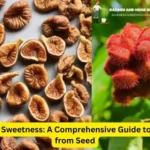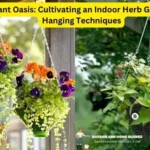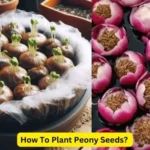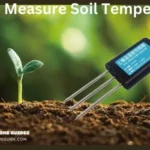Life Tips
Vegetables That Grow In Containers
The allure of fresh, homegrown produce is undeniable. The satisfaction of nurturing a tiny seed into a flourishing plant, culminating in a plate overflowing with vibrant vegetables, is a rewarding experience. However, the limitations of space and soil conditions often deter aspiring gardeners.
Fortunately, a world of possibilities opens up when we embrace the versatility of container gardening. This method allows us to cultivate a diverse array of vegetables, even in the most confined spaces, transforming balconies, patios, and rooftops into thriving edible gardens.
Let’s learn more about vegetables that grow in containers with gardenandhomeguide.com in the article below!
The Advantages of Container Gardening
Container gardening offers numerous advantages, making it an ideal choice for both seasoned and novice gardeners. Perhaps the most significant benefit is its flexibility. Unlike traditional in-ground gardens, containers can be easily moved to optimize sunlight exposure and protect plants from harsh weather conditions. This mobility allows gardeners to adapt to changing seasons and maximize yields.
Furthermore, container gardening provides unparalleled control over the growing environment. By selecting the right potting mix and amending it with nutrients, gardeners can ensure their vegetables receive the ideal conditions for healthy growth. This control is particularly beneficial for those with challenging soil conditions or limited space.
Choosing the Right Containers
The selection of containers is crucial for successful container gardening. The ideal container should be large enough to accommodate the plant’s root system and provide adequate drainage to prevent waterlogging. A variety of materials can be used, each offering unique advantages and disadvantages.
Plastic containers are lightweight and affordable, but they can overheat in direct sunlight. Terracotta pots are attractive and porous, allowing for good drainage, but they can dry out quickly. Wooden containers provide a rustic aesthetic but require regular maintenance to prevent rot. Ultimately, the best choice depends on the specific needs of the plants and the gardener’s preferences.
Selecting Vegetables That Grow In Containers
Not all vegetables are equally suited for container gardening. Some vegetables thrive in confined spaces, while others require extensive root systems and ample space to flourish. When selecting vegetables for containers, consider their size, growth habit, and root structure.
Compact Vegetables for Container Gardening:
- Lettuce and Greens: These leafy vegetables are ideal for container gardening, as they grow well in shallow containers and require minimal space. Varieties like romaine, butterhead, and loose-leaf lettuce can be grown successfully in containers.
- Radishes: These fast-growing root vegetables are perfect for beginners and can be harvested in as little as a month. Their shallow root systems make them well-suited for container gardening.
- Carrots: While carrots typically require deep soil, dwarf varieties like ‘Thumbelina’ and ‘Parisian Market’ can be grown successfully in containers.
- Tomatoes: Cherry tomatoes, grape tomatoes, and patio tomatoes are compact varieties that thrive in containers. Their determinate growth habit means they reach a certain height and then focus on producing fruit, making them suitable for smaller spaces.
- Peppers: Bell peppers, chili peppers, and jalapeno peppers can be grown in containers, particularly dwarf varieties.
- Herbs: Herbs like basil, parsley, cilantro, and oregano are excellent choices for container gardening. They are relatively compact and can be grown in a variety of containers, including hanging baskets.
Larger Vegetables for Container Gardening:
- Bush Beans: Bush beans are a good choice for container gardening, as they are compact and produce a plentiful harvest.
- Cucumbers: Vining cucumbers, such as ‘Lemon Cucumber’ and ‘Armenian Cucumber,’ can be grown in containers, but they require trellising or support to maximize their yield.
- Squash: Bush squash varieties, such as ‘Yellow Crookneck’ and ‘Patty Pan,’ are well-suited for container gardening.
Essential Considerations for Container Gardening
- Sunlight: Most vegetables require at least six hours of direct sunlight per day. Choose a location that receives ample sunlight, or consider using grow lights to supplement natural light.
- Watering: Containers dry out quickly, so regular watering is essential. Monitor the soil moisture and water deeply when the top inch of soil feels dry.
- Fertilization: Container-grown vegetables require regular fertilization to replenish nutrients. Use a balanced fertilizer specifically formulated for vegetables, and apply it according to the manufacturer’s instructions.
- Pest and Disease Control: Container gardens are more susceptible to pests and diseases than in-ground gardens. Monitor your plants regularly for signs of infestation or disease, and take appropriate action to control them.
Tips for Successful Container Gardening
- Choose the Right Potting Mix: Use a high-quality potting mix specifically designed for vegetables. It should be well-draining and rich in nutrients.
- Start Seeds Indoors: Starting seeds indoors allows you to get a head start on the growing season and increase your chances of success.
- Provide Support: For vining vegetables, such as cucumbers and tomatoes, provide support in the form of trellises or cages to encourage vertical growth.
- Harvest Regularly: Harvesting regularly will encourage the plant to produce more fruit or vegetables.
The Joy of Growing Your Own Vegetables
Container gardening offers a rewarding and accessible way to enjoy the bounty of fresh, homegrown vegetables. Whether you have a small balcony or a spacious patio, the possibilities are endless. By understanding the principles of container gardening and selecting the right vegetables, you can create a thriving edible oasis in your own backyard, transforming your space into a source of delicious and nutritious food.
The experience of nurturing plants from seed to harvest is not only fulfilling but also contributes to a more sustainable and connected lifestyle.






